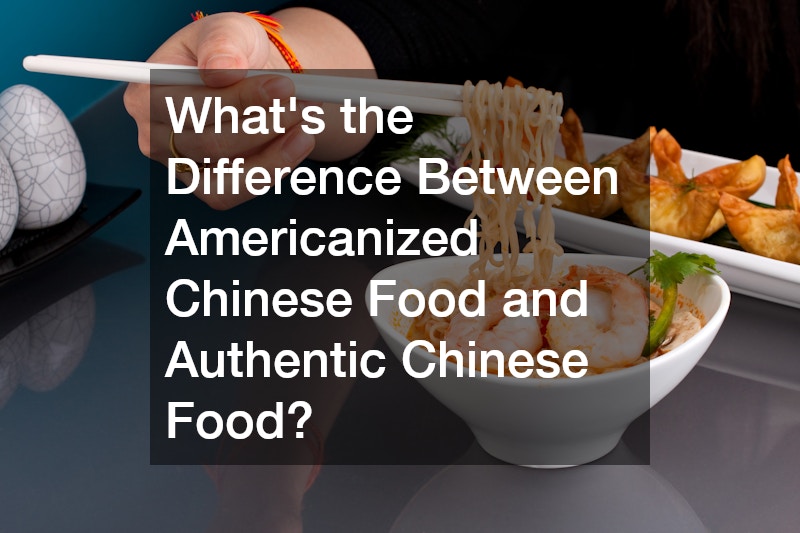
Chinese cuisine is one of the most beloved and widely consumed foods in the world, particularly in the United States. However, there is a significant distinction between Americanized Chinese food and authentic Chinese food. While both share common roots, they differ greatly in ingredients, preparation methods, flavor profiles, and cultural significance. Understanding these differences can enhance our appreciation of Chinese culinary traditions and help us make more informed dining choices.
Historical Context
To comprehend the difference between Americanized and authentic Chinese food, it’s important to consider the historical context. Chinese immigrants began arriving in the United States during the mid-19th century, primarily seeking work during the Gold Rush and later building the transcontinental railroad.
These immigrants brought their culinary traditions with them, but they had to adapt their recipes and ingredients based on what was available in America.
As a result, Americanized Chinese food evolved, catering to the American palate and preferences. Dishes were modified to include sweeter flavors and heavier sauces, often at the expense of authenticity. Over time, this adaptation has led to a culinary genre that, while delicious, bears little resemblance to traditional Chinese cooking.
Ingredients
One of the most noticeable differences between Americanized Chinese food and authentic Chinese food is the ingredients used. Americanized Chinese dishes often rely on easily accessible items, such as chicken, beef, pork, and shrimp, combined with a variety of sauces like sweet and sour, General Tso’s, or orange sauce. These dishes are usually heavily seasoned with sugar, salt, and cornstarch, resulting in a sweeter and thicker sauce that is distinctively different from traditional Chinese flavors.
In contrast, authentic Chinese cuisine utilizes a wide array of fresh ingredients, including a diverse selection of vegetables, herbs, and spices. Ingredients like bok choy, shiitake mushrooms, and various types of tofu are common in traditional dishes. Moreover, authentic Chinese cooking emphasizes balancing flavors, often incorporating five fundamental tastes: sweet, sour, salty, bitter, and umami. This complexity is often lost in Americanized versions, which tend to focus primarily on sweetness and saltiness.
Preparation Methods
The preparation methods of Americanized Chinese food differ significantly from those used in authentic Chinese cooking. In Americanized cuisine, dishes are often deep-fried or sautéed with heavy oils, contributing to a greasy texture and appearance. Popular Americanized dishes like egg rolls and crab rangoon are typically deep-fried and served as appetizers.
On the other hand, authentic Chinese food incorporates a variety of cooking techniques that focus on preserving the natural flavors and textures of ingredients. Stir-frying, steaming, braising, and boiling are common methods, each chosen for the specific dish being prepared. For instance, dim sum is traditionally steamed, while dishes like kung pao chicken are stir-fried to achieve the right balance of flavor and texture.
Flavor Profiles
The flavor profiles of Americanized and authentic Chinese foods are another area of distinction. Americanized Chinese dishes often cater to the American taste for bold, sugary flavors. For example, the ubiquitous sweet and sour chicken is a prime example of this trend. The dish is characterized by its thick, sugary sauce and often features heavily battered and fried chicken pieces.
Authentic Chinese food, however, presents a more nuanced approach to flavor. Dishes are designed to balance multiple taste elements, allowing for a richer, more complex culinary experience. For instance, a traditional mapo tofu might blend the spicy heat of Sichuan peppercorns with the savory umami of fermented bean paste, resulting in a dish that is both flavorful and sophisticated. This complexity is often achieved through the careful layering of ingredients and seasoning throughout the cooking process.
Regional Variations
China’s vast geography and diverse cultural history contribute to a wide range of regional cuisines, each with its own distinct flavors, ingredients, and cooking techniques. From the spicy dishes of Sichuan to the delicate flavors of Cantonese cuisine, authentic Chinese food offers an expansive palette of culinary experiences.
In contrast, Americanized Chinese food tends to homogenize these regional differences, often presenting a simplified version of Chinese cuisine that lacks the regional specificity found in authentic dishes. Many American Chinese restaurants focus on a core set of popular dishes, such as orange chicken, fried rice, and lo mein, rather than offering a true representation of the diverse culinary landscape of China.
Cultural Significance
Finally, the cultural significance of Chinese food plays a crucial role in distinguishing between the two styles. In Chinese culture, food is deeply intertwined with tradition, family, and social connections. Meals are often a time for gathering, celebrating, and sharing stories. Traditional Chinese dishes are steeped in symbolism and meaning, with many recipes passed down through generations.
Watch the video above to learn more and visit an authentic Chinese restaurant today!.




